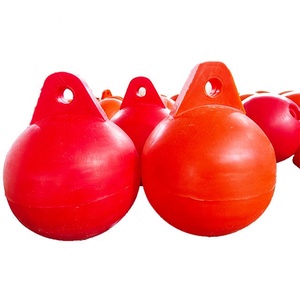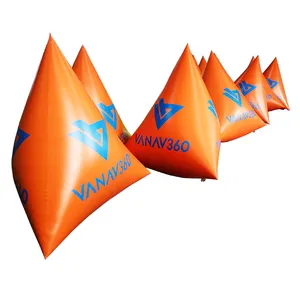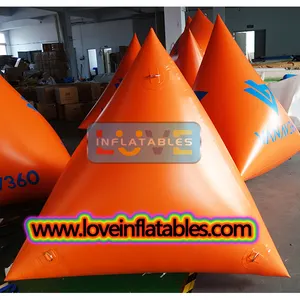



































































































































































































Top categories
About floating marker buoys
Floating Marker Buoys: An Overview
Navigational safety and marine management are critically dependent on the deployment of floating marker buoys. These essential marine aids serve as the visual signaling medium in vast water bodies, delineating various zones and providing location markers for seafarers.
Types and Applications
The variety of floating buoy markers encompasses several types, each tailored for specific applications. Anchor marker floats are widely used to indicate the presence of an anchor below the water's surface, while crab pot marker buoys and lobster pot marker buoys mark the locations of fishermen's traps. For recreational areas, buoys for swimming areas demarcate safe zones for swimmers, and swimming area marker buoys are employed to outline the perimeters of designated swimming locations.
Features and Materials
The construction of floating marker buoys involves robust materials capable of withstanding marine conditions. These buoys are designed to remain afloat and stable in a variety of sea states, ensuring visibility and durability. Materials typically include high-impact plastics and UV-resistant coatings to prevent degradation from sunlight exposure.
Advantages of Utilizing Marker Buoys
The strategic placement of floating anchor marker buoys aids in the prevention of boating accidents by providing clear navigation points. Similarly, the use of anchor float markers assists boaters in locating their anchors efficiently. In commercial fishing, marker buoys are indispensable for the quick retrieval of gear, saving time and labor for fishermen.
Environmental and Regulatory Compliance
Floating marker buoys also play a role in environmental conservation by marking protected areas and aiding in compliance with marine regulations. They help in maintaining the balance between marine activities and ecosystem preservation, ensuring that maritime operations do not encroach on sensitive habitats.
Selection and Placement Considerations
Choosing the right type of marker buoy is crucial for effective maritime operations. Factors such as buoyancy, visibility at a distance, and resistance to marine growth are important considerations. The placement of these buoys should be strategic, ensuring they are visible and accurately represent the underwater topography or designated zones they are meant to indicate.

























































